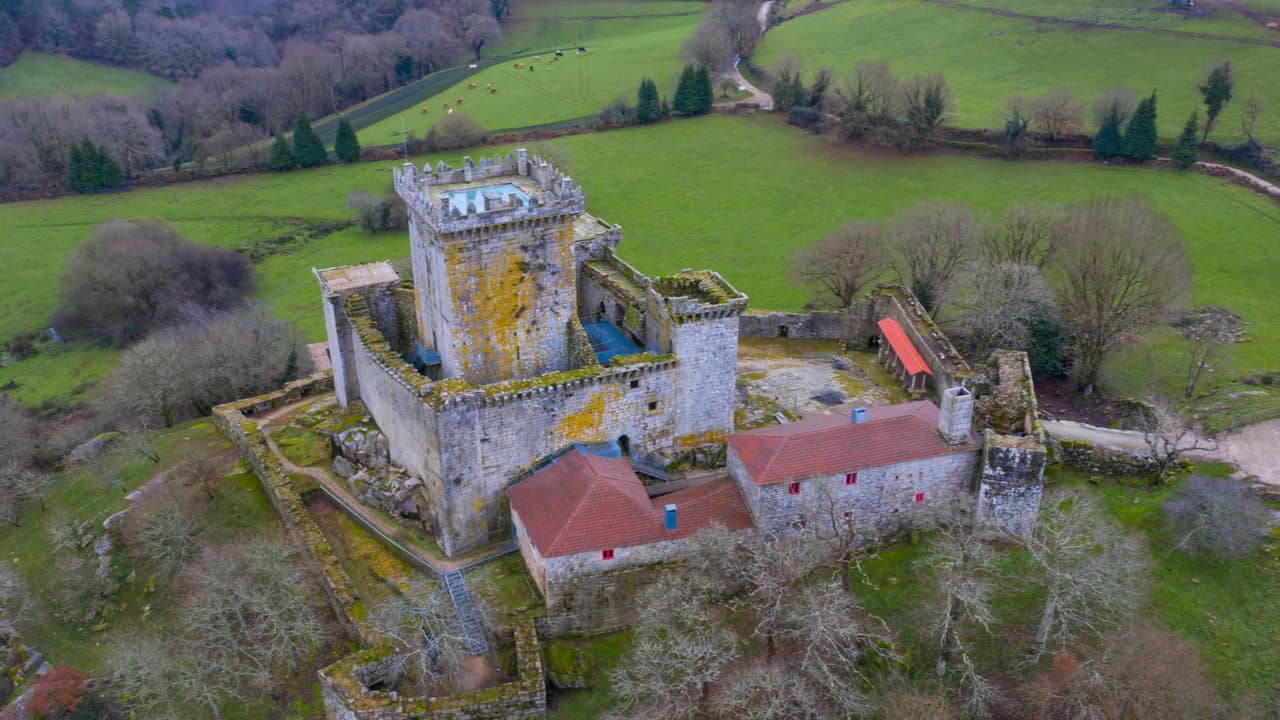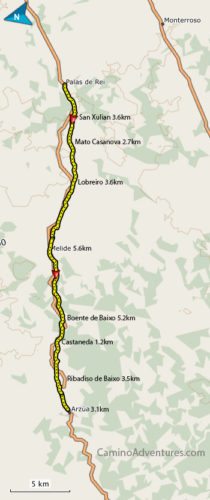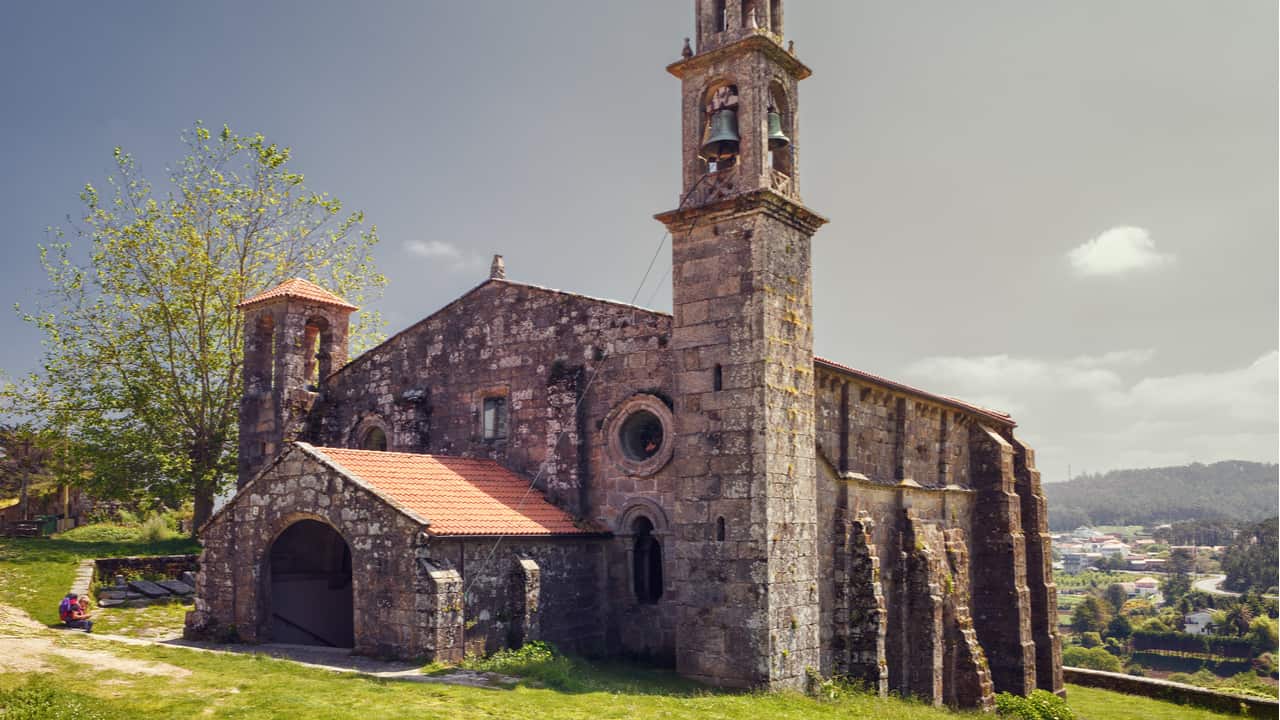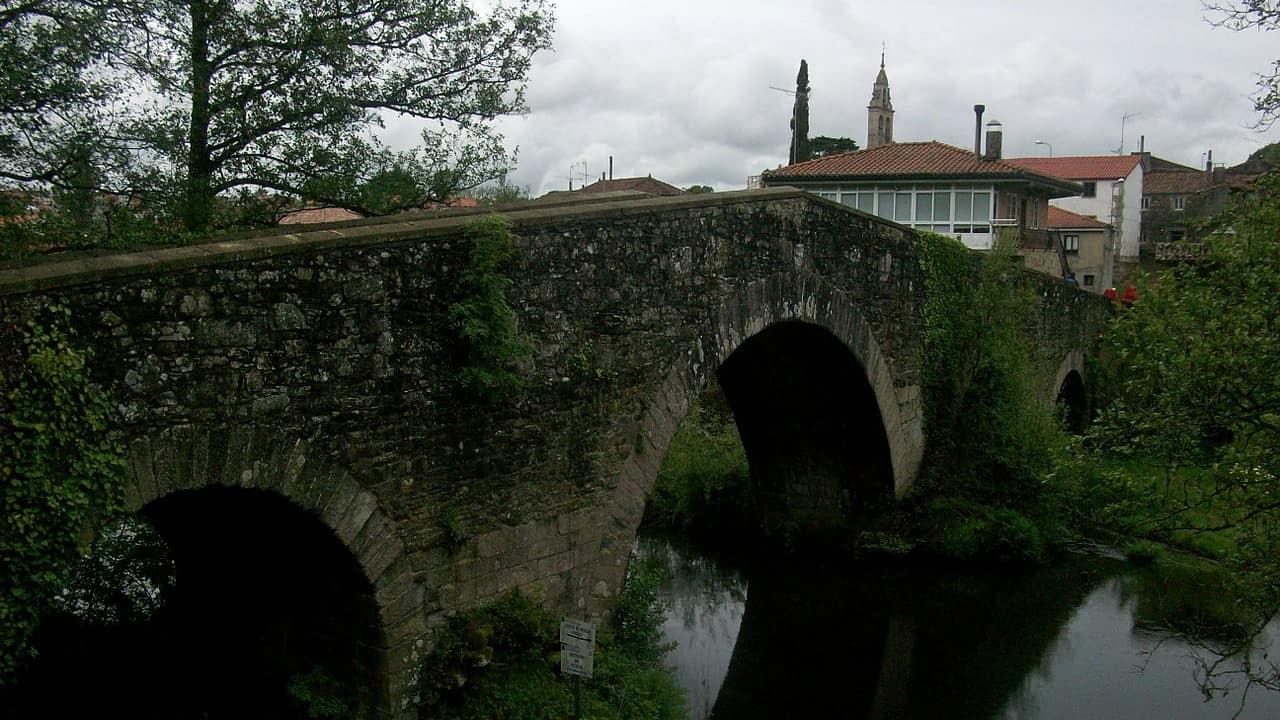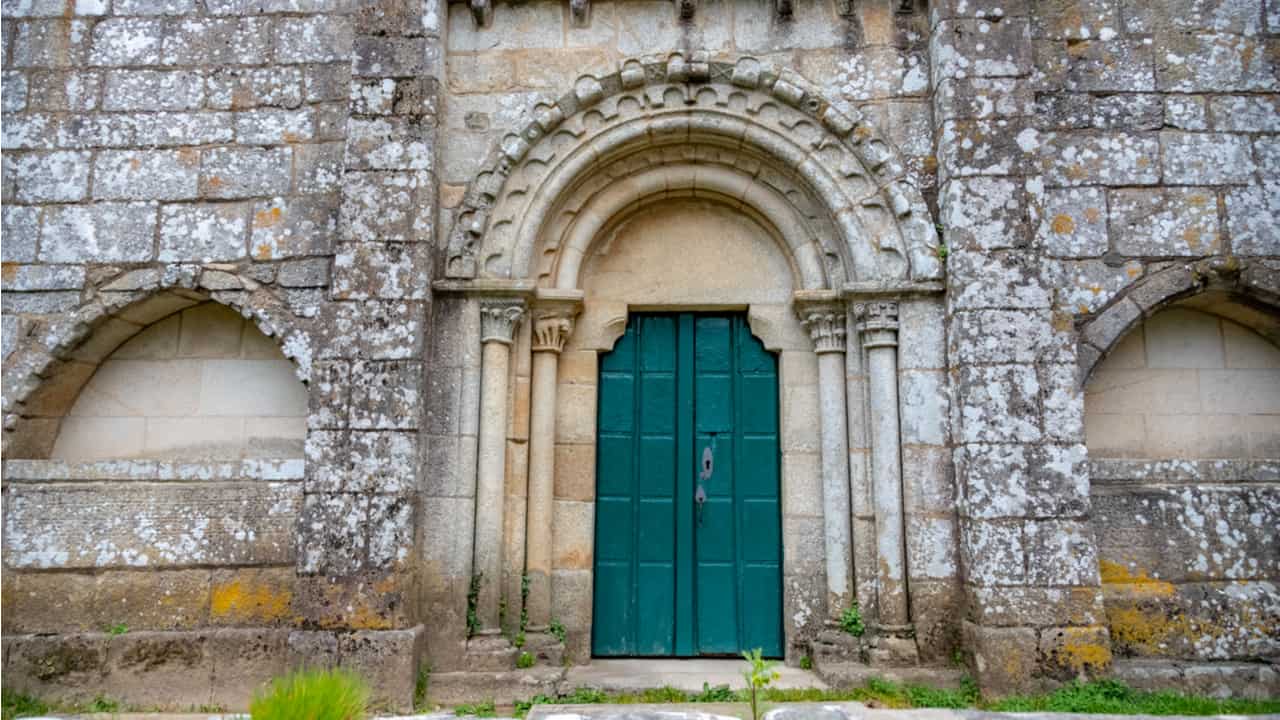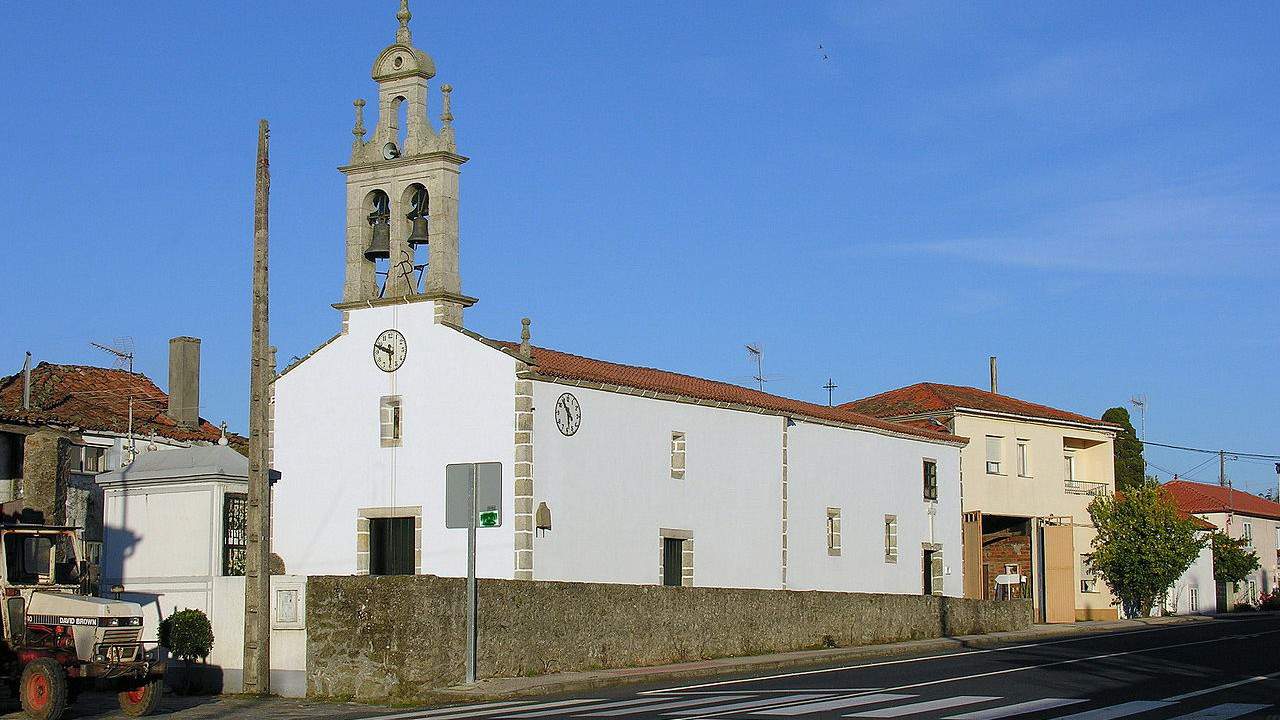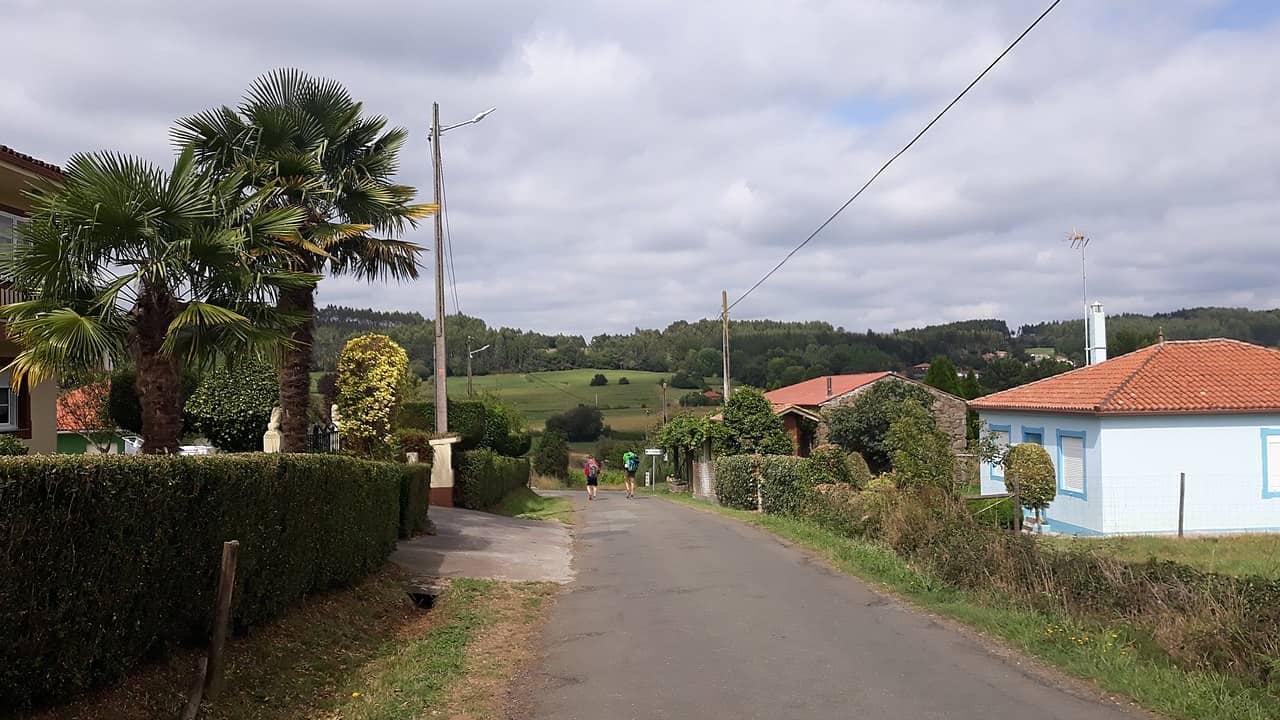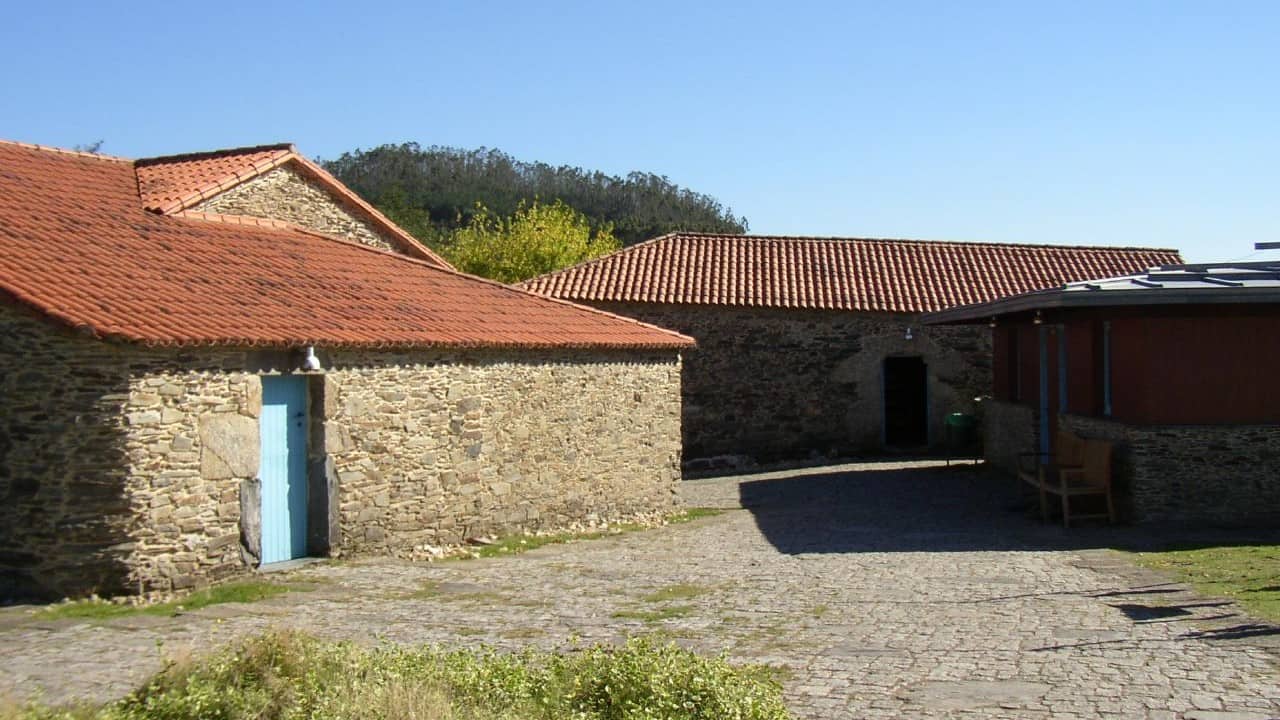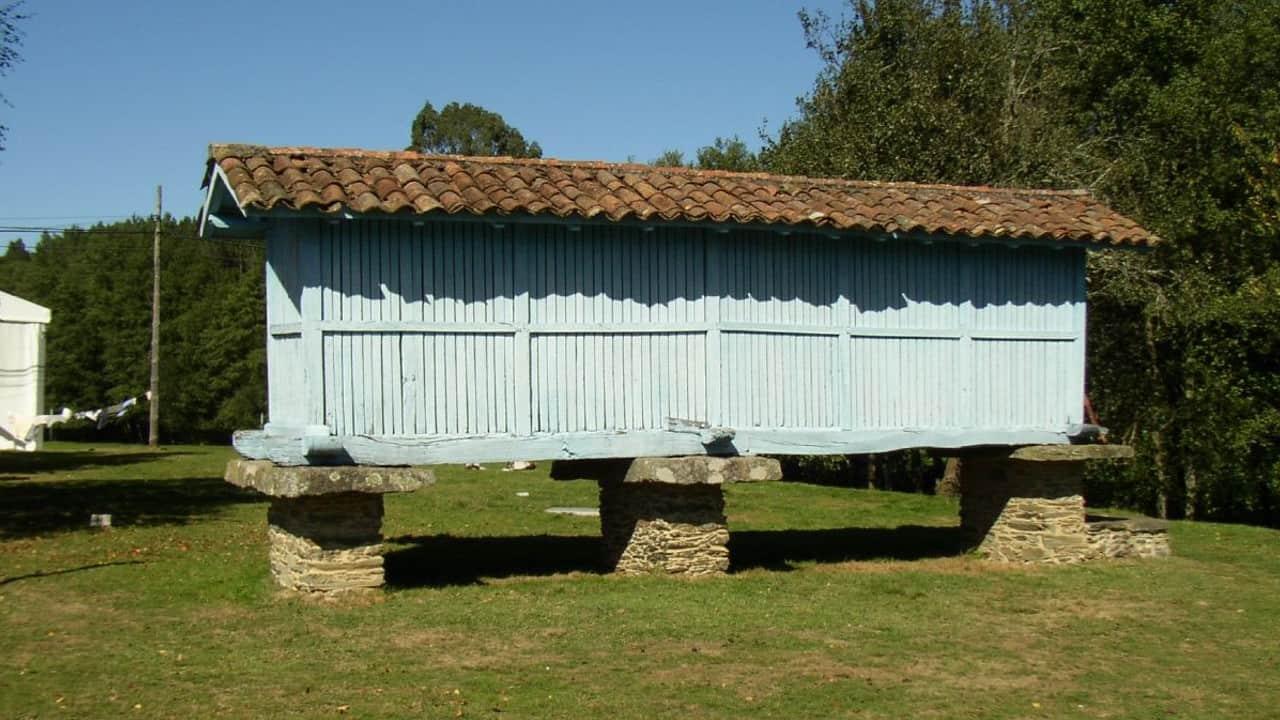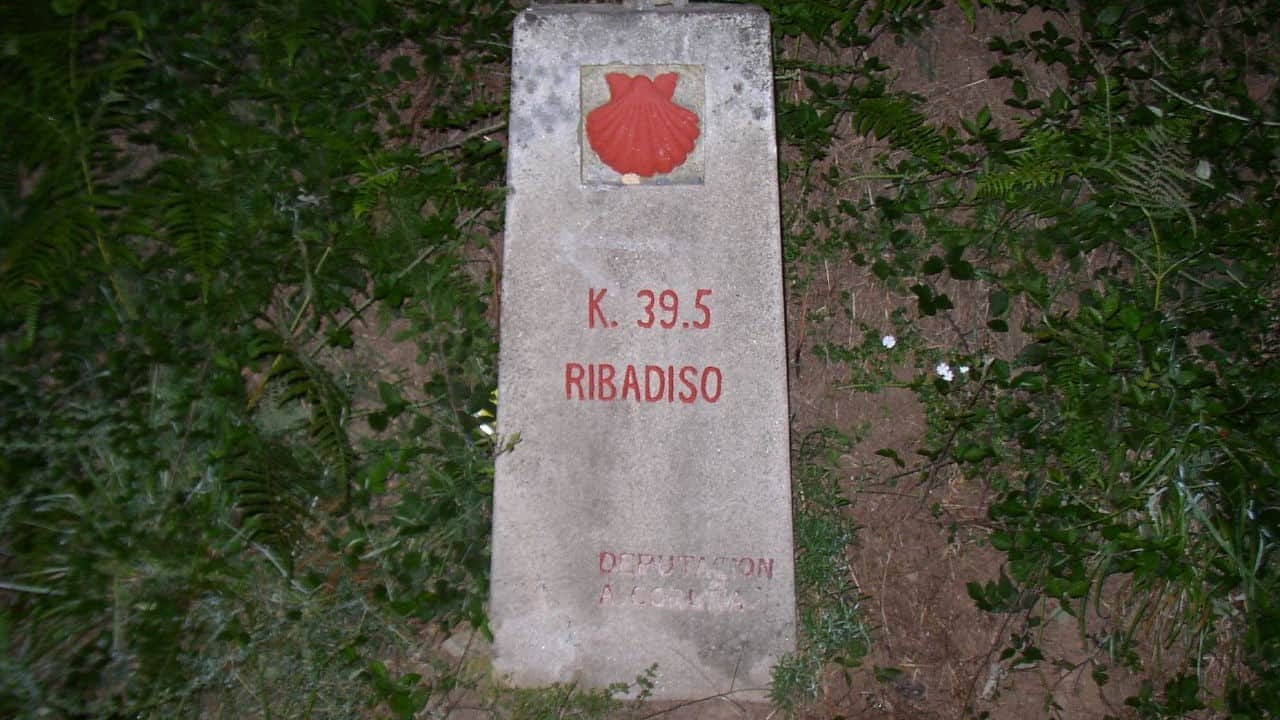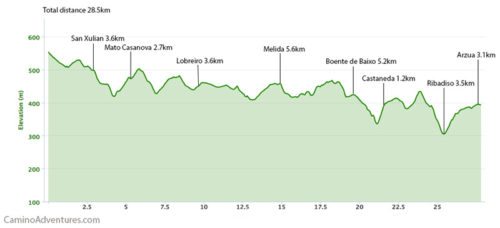Palas de Rei was referred to as the Royal Palace in the first pilgrims’ guide from the 12th century, however, there is little in the town now to remind us of its historic past.
There is the Church of San Tirso which has a Romanesque portal and scallop shells decorate a medieval building; it is a strange contrast to the wealth of the surrounding countryside which has 20 Romanesque Parish churches from a total of 43 within the Palas parish.
One wonders if Aymeric Picaud, author of Codex Calixtinus, had an experience during this stage. He wrote:
Innkeepers’ servants along the Road to Santiago who take pleasure in seduction for illicit gain, are inspired by the Devil himself to get into pilgrims’ beds at night, are fully reprehensible. Harlots who go out to meet pilgrims in wild parts between Portomarin and Palas de Rei for this purpose should not only be excommunicated, but also stripped of everything and exposed to public ridicule, after having their noses cut off.
Today’s Walk: 28.5 km (17.7 mi)
Today is an easy day, apart from the length of the route, it is easy underfoot and there are no long steep ascents or descents. The Spanish call this section the “leg breaker” not due to the surface, but due to the length.
If you have been walking for the last two weeks or more you will find it quite an easy stroll in comparison to much of the way already walked.
Today again you are only a couple of kilometers between towns and villages, therefore filling up with water or eating is easy and you don’t have to carry any food with you – unless you want to relax and eat outside somewhere.
I see this day as the start of the countdown to Santiago de Compostela. Shortly after Coto, there are stone markers at the side of the path with the distance to Santiago marked.
Much of the day is shaded and shortly after Melide, where the Camino Primitivo joins the Frances, you will walk through Oak and Eucalyptus forest with the wonderful smell. Melide is where the Camino Primitivo joins with the Camino Frances.
San Xulian
3.6 km (2.4 mi), Cafe in the albergue
This village has historic links with Saint Julian, hence the name. Legend has Saint Julian a noble soldier killing his parents by accident. To expurgate his sin he founds a hospital for pilgrims.
He is later visited by an angel who tells him that he has been granted a divine pardon. There is a small Romanesque Parish Church San Julian do Camino which illustrates the devotion to the saint in this area.
Ponte Campana
1 km (0.6 mi), Bar
Mato Casanova
1.7 km (1.05 mi), Bar, Cafe, water
Lobreiro
3.6 km (2.2 mi) Bar, Cafe, Water
Municipal Albergue, very basic, one WC, on the main road in the village, €6, 20 beds, open all year, Tel: 981 505 003
Lobreiro was an important stop on the pilgrim’s road when Aymeric Picaud wrote in the 12th century, but not now. The village has a Romanesque Parish Church of Santa Maria with a beautifully carved figure of the Virgin on the portal.
Opposite the church is a building that was once a pilgrims’ hospital. You can still see the coat of arms belonging to the Ullo family, who founded the hospital, on the facade of the building which is known to have existed in the 12th century.
Before Melide you cross a four-arched medieval bridge that spans the river into the village of Furelos. The village still has a medieval air; in the center is the Church of San Juan beside this a pilgrims hospital was once located.
Melide
5.6 km (3.5 mi), All services
Melide is a busy market town that has a long history with the Camino. In the middle ages, there were 100 families living here, (1,575), most were innkeepers and four large hospices for pilgrims. One of these hospices had 12 beds to sleep 24 pilgrims – 2 to a bed was typical.
On the route into Melide is the Church of San Pedro. Internally, there are some fragments of 15th-century mural paintings, however, in front of the church, there is a 14th-century cross that is one of the finest in Galicia depicting God the Father and the Crucifixion with Maria.
The Church of Santa Maria de Melida was once outside of the town, however, over the years it has become part of the suburbs. It is a 12th-century Romanesque single-nave church with a barrel vault. Although the church dates from the 12th century the frescos are 15th century; the central deity is the Trinity rather than the Virgin.
Boente de Baxixo
5.2 km (3.2 mi), food shop, cafe, bar, water
There is a small Parish Church of St James with Santiago seated like the statues in Santiago cathedral. However, it has little artist merit in comparison to the cathedral.
Castaneda
1.2 km bar, water
Albergue Bar Santiago, private, €11, 6 beds, W, D, M, B, Bike, Tel: 981 501 711, open all year.
Castaneda was famous for the furnaces where lime was prepared for use during the construction of Santiago cathedral. Picaud mentions it as a place where stones that have been picked up by pilgrims in Tricastela, where the quarries were, to obtain lime for the work on the basilica of the Apostle.
Ribadiso da Baixo
3.5 km (2.2 mi), bar, cafe, water
The Xunta pilgrims’ hostel was once “Hospital de San Anton de Ponte de Ribadiso” dating from the 14th century, it has been restored to be used again as pilgrims albergue.
Ribadiso da Carretera
It’s a 3.1-km (1.9 mi) walk from Ribadiso to Arzua, you’ll find all facilities there.

I love hiking, backpacking, and camping. From the Camino de Santiago to the West Highland Way in Scotland or simply a great day hike on the weekend. Hiking refreshes me, my mind, and keeps my body reasonably fit. So far I have walked three Camino routes and many other long distance hikes in the UK, Canada, and around the rest of Europe. One of the best was my hike up Ben Nevis.

